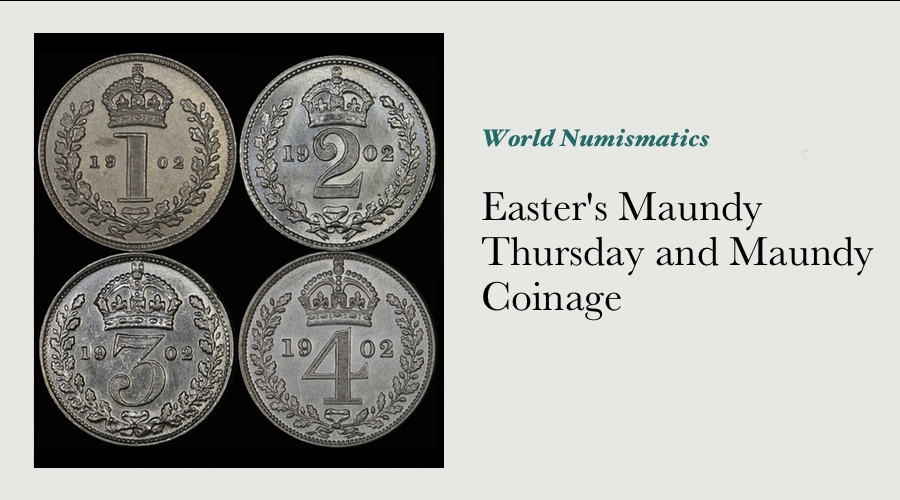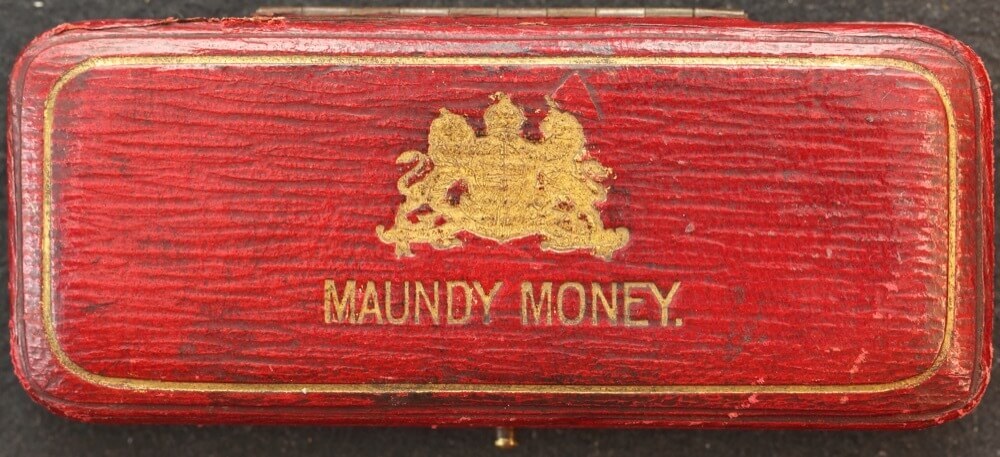Easter's Maundy Thursday and Maundy Coinage

The first royal Maundy money ceremony took place when King Charles II gave people undated hammered coins in 1662. The distribution of coins to deserving citizens across the UK on Maundy Thursday continues today - Maundy coins have proven to be a rewarding, challenging and historic series of coins for collectors to acquire.
What Is Maundy Thursday?
While a foot-washing ceremony will strike many non-Christians in the 21st century as being rather archaic, this passage of the Bible shows that Christ intended it to be a physical demonstration of the equality of all in the eyes of God - no man is so higher or lower than another that they cannot wash their brother’s feet, or have them washed:
"If I then, your Lord and Teacher, have washed your feet, you also ought to wash one another’s feet. For I have given you an example, that you should do as I have done to you. Most assuredly, I say to you, a servant is not greater than his master; nor is he who is sent greater than he who sent him. If you know these things, blessed are you if you do them."
There are many countries in the world where many churches of the Christian faith observe Maundy Thursday as part of Easter activities - Great Britain however is the only country in the world that has included silver maundy coins as part of the commemorations.
What Are Maundy Coins?

Maundy Coin Set - Official Case
King “…Henry IV began the practice of relating the number of recipients of gifts to the sovereign's age, and as it became the custom of the sovereign to perform the maundy ceremony, the event became known as the Royal Maundy.”
“In the eighteenth century, the act of washing the feet of the poor was discontinued, and in the nineteenth-century money allowances were substituted for the various gifts of food and clothing.”
“Maundy money as such started in the reign of Charles II, with an undated issue of hammered coins in 1662. The royal maundy coins were a four-penny, three-penny, two-penny and one-penny piece but it was not until 1670 that a dated set of all four coins appeared. Before this, ordinary coinage was used for Maundy gifts, silver pennies alone being used by the Tudors and Stuarts for the ceremony.”
“Maundy money has remained in much the same form since 1670, and the coins used for the royal Maundy ceremony have traditionally been struck in sterling silver…”

1896 Maundy Coin Set
“Today's recipients of Royal Maundy, as many elderly men and women as there are years in the sovereign's age are chosen because of the Christian service they have given to the Church and community. At the maundy ceremony which takes place annually on Maundy Thursday, the sovereign hands to each recipient two small leather string purses. One, a red purse, contains – in ordinary coinage – money in place of food and clothing; the other, a white purse, contains silver Maundy coins consisting of the same number of pence as the years of the sovereign's age.”
What Is A Maundy Coin?

1826 Maundy Coin Set
A royal Maundy coin has been struck for distribution in a set of royal Maundy money by the English monarch during royal maundy ceremony on Maundy Thursday. The four coin denominations that have been included in royal Maundy coin sets since 1670 are Fourpence (3d); Threepence (3d); Twopence (2d) and Penny (1d).
How Many Maundy Coins Are Given Out?
There are as many recipients of royal Maundy Money as there are years in the sovereign’s age. At the royal maundy ceremony, the monarch hands each recipient two small leather string purses. A red purse contains ordinary coins, while a white one contains silver Maundy coins, amounting to the same number of pence as the years of the sovereign’s age. In 2015, the Queen performed the pre-Easter tradition of handing out silver maundy coins to the elderly in Sheffield. The Queen handed out two purses – one red and one white to each of the chosen recipients. The white purse contained Maundy coins to the value of 89 pence, while the red purse contained a £5 and a 50p coin.
Who Is Eligible For Maundy Money?
Today the recipients are pensioners, chosen on an interdenominational basis from various Christian churches for their service to their churches and communities. In most years, recipients are nominated by Christian clergy of various denominations in the diocese where the service is held.
Why Do People Collect Maundy Coins?
For numismatists, every coin tells a unique story. Few coins carry such a deep sense of history and tradition as elusive silver Maundy money. Imagine holding a maundy penny that commemorates an ancient ritual linked to the Last Supper, an experience that is deeply rooted in the Christian faith. A collection of Maundy coins is one way of preserving a tradition that has lasted for several centuries.
Collectors are drawn to the uniqueness and rarity of Maundy coins - they are only produced once a year and in limited quantities.
How Can I Collect Maundy Coins?
There are several ways of collecting maundy money - the easiest way is to get just one set as a representative of the entire maundy coinage series. Some collectors will want to get the rarest or most historic set they can find, others will be happy with an affordable set that doesn't cost the earth.
If a set of maundy coins struck by the Royal Mint is beyond your budget, you could consider getting just one maundy coin to represent the series.
Perhaps the next level of maundy coinage collecting is to build a type set. A type set of maundy coinage would include one set of four maundy coins from each monarch that has issued them. Such a set might include one set of four maundy coins from Queen Elizabeth II, another set of maundy coinage struck by the Royal Mint from King George VI; another set of maundy money issued by King George V, and so on all the way back to King Charles II.
A truly comprehensive collection of maundy money would include one set of maundy money from each and every year when the Royal Mint struck coins for a royal maundy service. Such a comprehensive representation of the royal maundy ceremonies across several centuries would make a superb collectible celebrating this ancient ceremony.